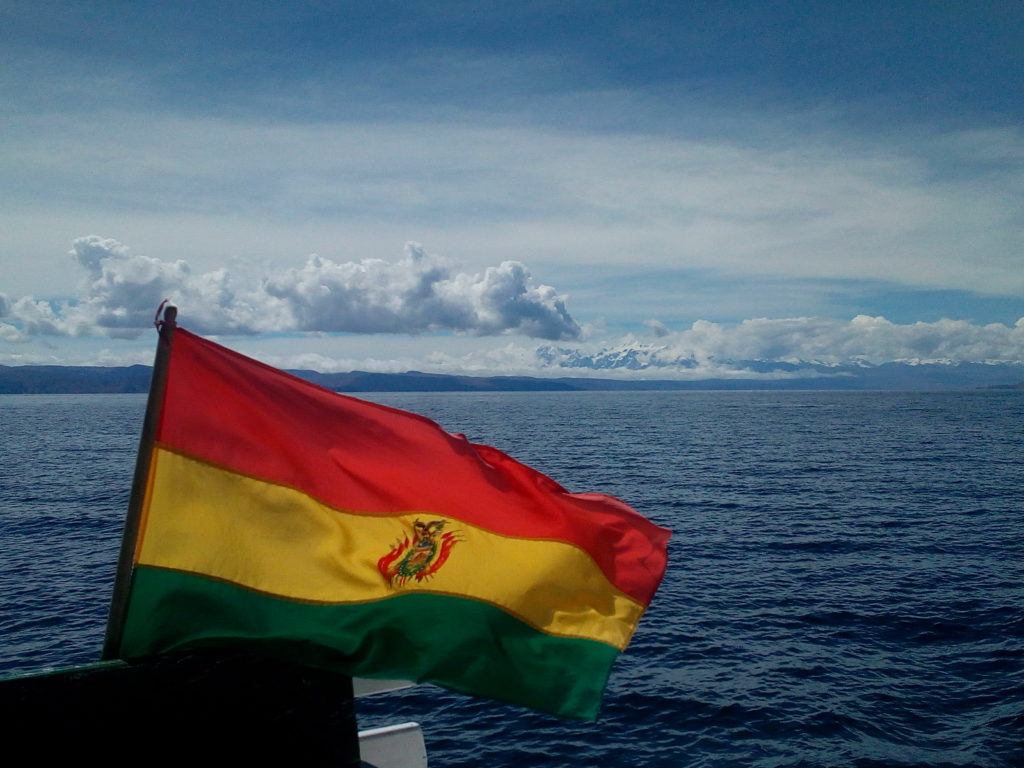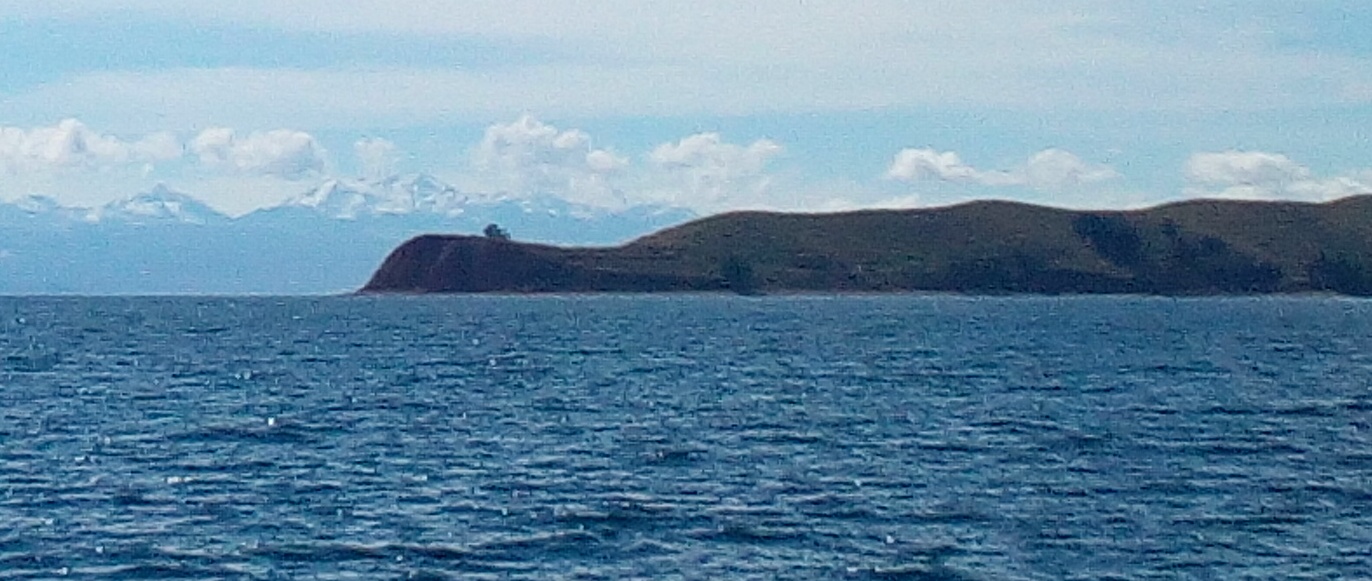Passing from Bolivia to Peru, I stopped by Copacabana on the Bolivian side and by Puno on the Peruvian side to enjoy Titicaca lake and its islands.
Titicaca lake is the highest navigable lake in the world with 3.810m of altitude. Its total surface is around 8,500 km2 and its depth varies from a few meters to 285 m for the deepest part. 60% of it is in the Peruvian side; and 40% in the Bolivian side. It contains around 900 km3, or 900 billion m3 of water!
At the beginning, there were 3 highly saline lagoons. Then there was a deluge for 40 days and 40 nights, which led to the formation of Titicaca lake with sweet water “mixed” with salt water.
The original name of Isla del Sol is Isla Titikarka (pronounced in Arabic Titi9ar9a), a name that dates back to pre-Inca times. In Aymara language, Titi means puma and Karka means rocks.
But the Spaniards had trouble pronouncing this name and changed it to Titicaca. It is also this island that gave its name to Titicaca lake.
The original name of Isla de la Luna is Isla Koati.
Isla del Sol has 3,000 inhabitants and is 12 km long and 7 km wide. Three communities live there: the Yumani in the south, the Challa in the center, and the Challapampa in the north. The island lived only on agriculture, with mostly local production. Tourism began there 27 years ago, in 1991.
There are neither cars nor motorcycles here; the means of transport used is the donkey!
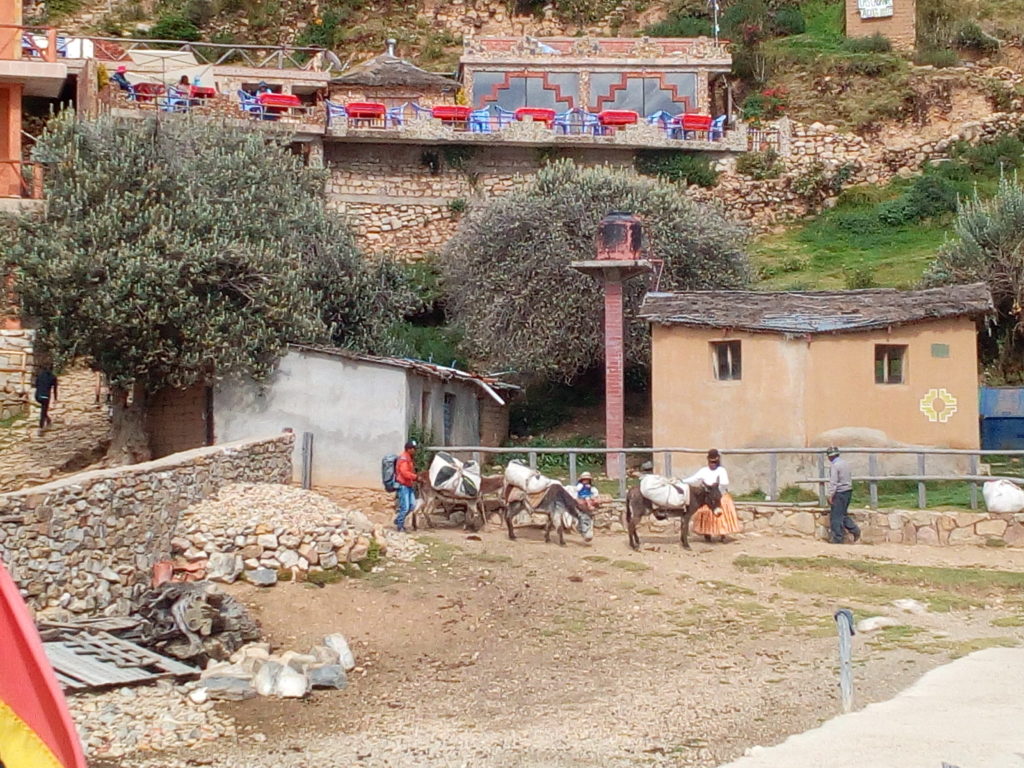
Besides, the conflict between the inhabitants of the center (conservatives, who want to preserve the way of life of the island) and those of the north (who want to capitalize on the tourism) is the reason why the access to the northern part of the island has been closed for a year now, what a shame!
The Fuente del Inca is the last Inca vestige, all the rest dates from the pre-Inca era. It is composed of 3 fountains with 3 waters of different flavor.
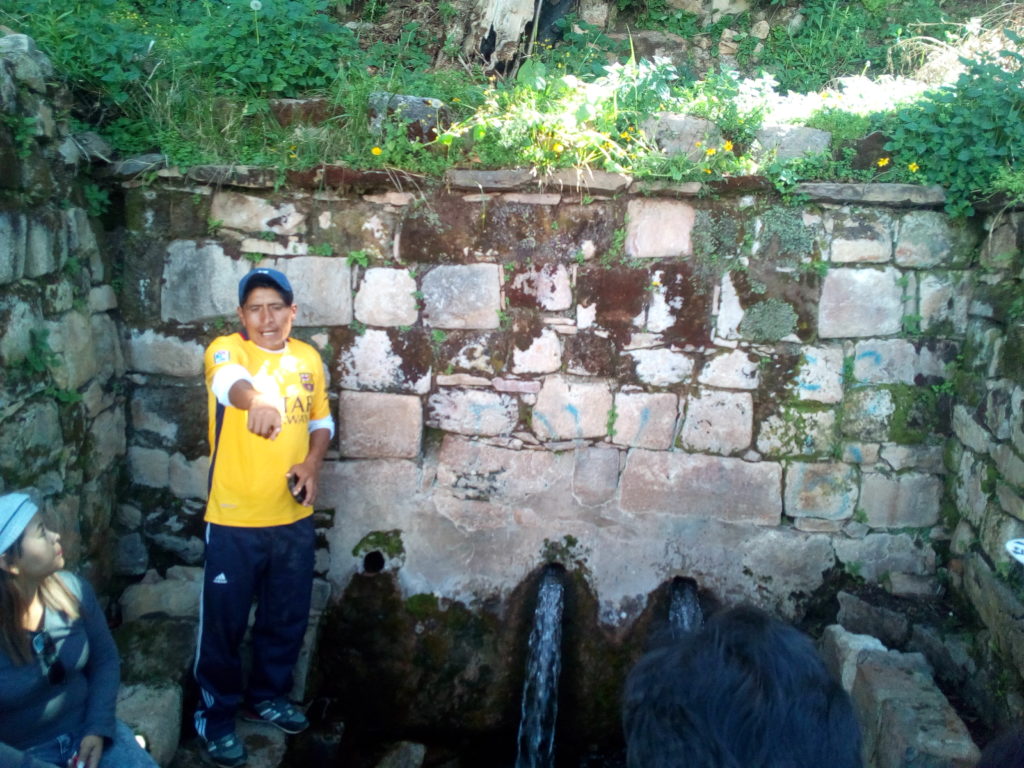
What to do from Copacabana?
It is possible to reach Isla del Sol from Copacabana by boat, there is a departure at 8:30 and another at 13:30. It is possible to spend one or two nights on the Isla del Sol, but since the northern part of the island, the most interesting one, is closed, this is not worth it. One night can still be nice to chill and enjoy a sunset and a sunrise the next day.
This is what my trip looked like
Departure at 8:30 from Copacabana for a ride to Isla de la Luna and Isla del Sol. The ticket costs 35 bolivianos (4 €).
1h30 by boat to get to Isla del Sol and drop off those who want to go there directly. Then another 30 minutes to reach the Isla de la Luna.
There we spent 1 hour, without guide, just enough time to see Palacio de las virgenes del sol, the calendario astronomico lunar and the muro de la piedra.
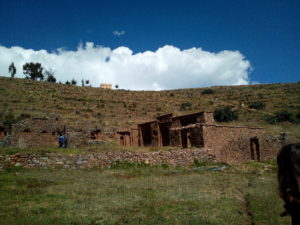
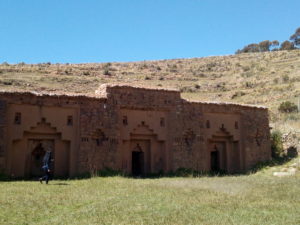
In Isla del Sol, you can walk alone from the main port, or take a 2-hours guided tour for 30 bolivianos with a Tiguanaca guide, native of the island. I chose this option; it’s always more interesting when a local explains things!
The visit began with a climb up a 4.000m-peak for 10 minutes, before starting a flat walk and then the descent to the port.
Most of the ruins are pre-Inca, characterized by 3 layers. These 3 layers symbolize:
– The condor, representing the sky
– The cougar, representing the land
– The snake, representing the underground world.
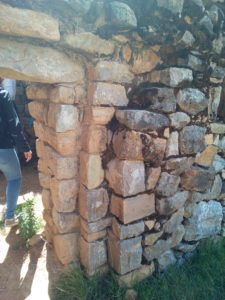
Once we finished our climb on the island, the guide introduced us to Lake Titicaca and Isla del Sol and their history (cf. the beginning of the article).
A walk to the end of the circuit to see the Fuente del Inca and the 204 pre-Inca stairs.
1h for lunch before leaving by boat at 15h and arriving in Copacabana at 16:30.
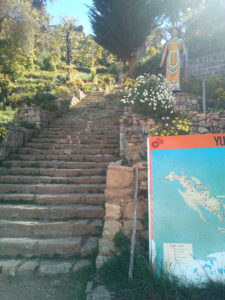
In conclusion
If you visit Isla del Sol when the northern part is still closed, 2 hours are enough to go around. Staying one night allows you to watch a nice sunset and sunrise, and enjoy a good local trout. It is possible to camp there and there are also hostels for lodging.
The visit of the Isla de la Luna is quite fast and does not represent a great interest in my opinion, better spend more time in Isla del Sol.
It takes 35 to 45 bolivianos for the menus in the restaurants at the end of the tour, but if you travel with a limited budget, you can bring your own food or buy sandwiches for 8 to 15 bolivianos down at the port.
Pura vida!
